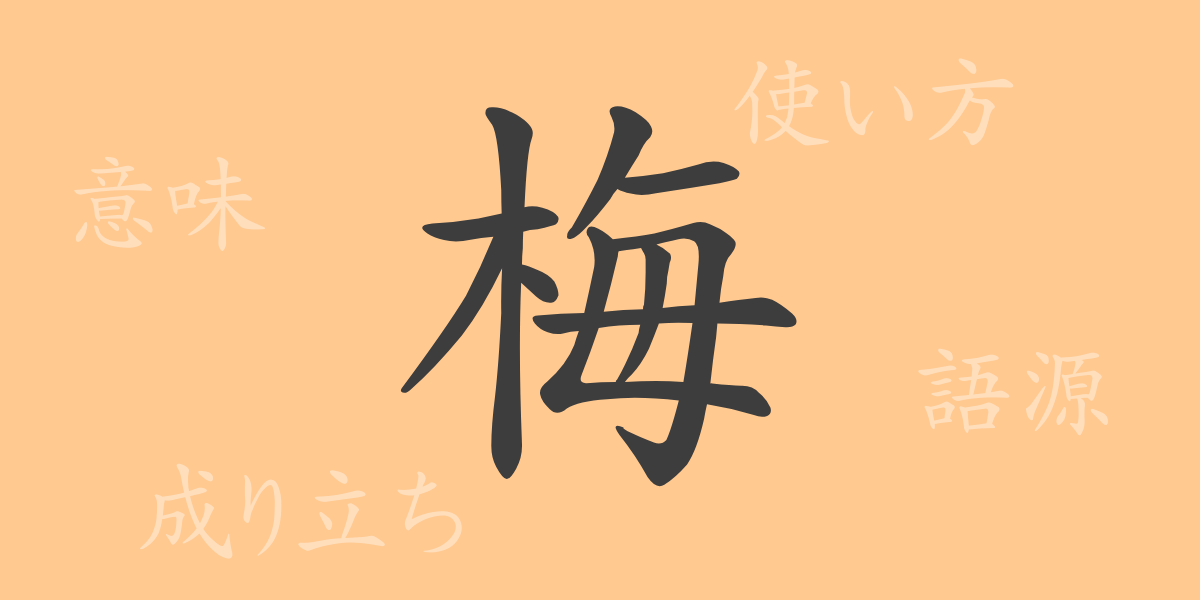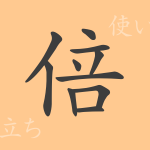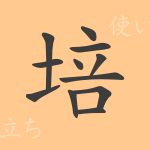In Japanese culture, the plum blossom, or “梅 (うめ)” (ume), holds a special place as a harbinger of spring. This beautiful flower, celebrated in poetry and art, is deeply rooted in Japanese culture and serves as a poignant symbol for many Japanese people. In this article, we will delve into the common kanji “梅” (うめ), exploring its origins, meanings, uses, readings, stroke count, and radical. Additionally, we will examine the cultural significance of “梅” (うめ) through the idioms, proverbs, and expressions that feature this evocative kanji, enriching our understanding of its role in the Japanese language.
Origins of “梅” (うめ)
The origins of the kanji “梅” (うめ) can be traced back to China. Mentioned in the ancient Chinese classic “Shijing,” the plum tree has been cherished in East Asia for centuries. By the Nara period, plums were already being cultivated in Japan, where the name “ume” (うめ) became established. The plum was revered as a plant that could “extend life,” making it a highly valued and auspicious symbol throughout history.
Meanings and Uses of “梅” (うめ)
Beyond its visual beauty and fragrance, and its culinary uses in umeboshi (pickled plums) and umeshu (plum wine), the plum in Japan symbolizes “endurance” and “hope” due to its hardiness and early bloom in spring. Additionally, the plum is associated with the “Jōshi no Sekku” (上巳の節句), one of the five traditional seasonal festivals, where it is displayed as a talisman to ward off evil and invite good fortune.
Readings, Stroke Count, and Radical of “梅” (うめ)
Let’s explore how the kanji “梅” (うめ) is read and composed within the Japanese language.
- Reading: The on’yomi (音読み) reading is “バイ” (bai), and the kun’yomi (訓読み) reading is “うめ” (ume).
- Stroke Count: “梅” (うめ) consists of 12 strokes.
- Radical: The radical for “梅” (うめ) is 木部 (きへん), meaning “wood” or “tree.”
Idioms, Proverbs, and Expressions Using “梅” (うめ)
There are many idioms, proverbs, and expressions in Japanese that feature “梅” (うめ), reflecting its symbolic meanings.
- 梅雨 (ばいう) – The term for the rainy season in early summer, characterized by long periods of rain.
- 梅が枝 (うめがえ) – Refers to the beauty of plum blossoms on their branches, often mentioned in poetry.
- 梅に鶯 (うめにうぐいす) – An expression that symbolizes the perfect harmony between two good things, much like the pairing of plum blossoms and nightingales.
- 梅を見て歩を止めず (うめをみてあしをとめず) – A proverb encouraging one to stay focused on their goal and not be swayed by temptations.
Conclusion on “梅” (うめ)
Among the flowers that adorn Japan’s four seasons, the plum blossom stands out for its rich history and cultural significance. The kanji “梅” (うめ), imbued with emotion, and the idioms, proverbs, and expressions derived from it, reflect the depth and richness of the Japanese language. Through this exploration, we hope to deepen your understanding of “梅” (うめ) and inspire a greater appreciation for Japanese culture.

























